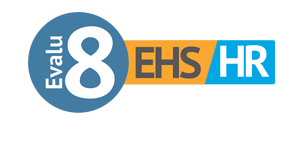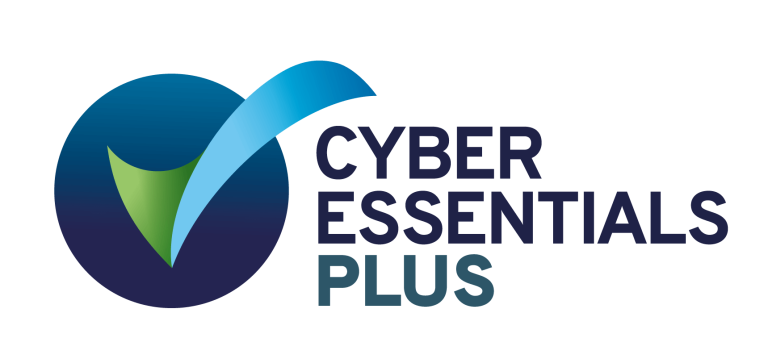Human Resources (HR) is a vital function in any organisation, responsible for managing the most valuable asset: its people. To effectively carry out this role, HR professionals follow a set of principles known as the “8 R’s of HR.” These principles encompass various aspects of human resource management, including recruitment, retention, remuneration, recognition, role definition, re-skilling, reassignment, and reconciliation. Let’s delve into each of these areas and explore their significance in creating a thriving work environment.
Understanding the Importance of the 8 R’s in HR
When it comes to HR management, the 8 R’s provide a comprehensive framework that ensures the development and maintenance of a skilled and engaged workforce. By prioritising these areas, companies can not only attract and retain top talent but also foster a positive corporate culture that nurtures and empowers its employees.
Let’s delve deeper into each of the 8 R’s to understand their significance:
1. Recruitment
Recruitment is the first step in building a strong workforce. It involves identifying the right talent for the organisation and attracting them through various channels such as job postings, career fairs, and social media. Effective recruitment strategies ensure that the company hires individuals who align with its values and goals.
Furthermore, a well-planned recruitment process can help create a diverse and inclusive workforce, bringing together individuals from different backgrounds and perspectives. This diversity fosters innovation and enhances problem-solving capabilities within the organisation.
2. Retention
Employee retention is crucial for the long-term success of any organisation. It involves creating an environment where employees feel valued, supported, and motivated to stay with the company. HR professionals play a vital role in implementing strategies that promote employee engagement, such as career development opportunities, competitive compensation packages, and work-life balance initiatives.
By focusing on retention, companies can reduce turnover rates, which in turn saves costs associated with recruitment and training. Moreover, a high retention rate contributes to a stable and experienced workforce, leading to improved productivity and customer satisfaction.
3. Rewards
Recognising and rewarding employees for their contributions is essential for boosting morale and motivation. HR professionals design reward systems that align with the company’s goals and values, ensuring that employees are acknowledged and appreciated for their hard work.
These rewards can take various forms, including monetary incentives, performance-based bonuses, and non-monetary recognition such as employee of the month programs or public appreciation. By implementing effective reward systems, organisations can create a culture of appreciation and encourage employees to go above and beyond in their roles.
4. Reselling
In today’s rapidly changing business landscape, reskilling employees is crucial to keep up with evolving job requirements. HR professionals identify skill gaps within the organisation and develop training programs to enhance employees’ capabilities.
Reskilling not only benefits the individual employees but also strengthens the organisation as a whole. It enables companies to adapt to new technologies, industry trends, and market demands, ensuring they remain competitive in the long run.
5. Redeployment
Redeployment refers to the process of reallocating employees to different roles or departments within the organisation. HR professionals assess employees’ skills and interests and identify opportunities for internal mobility.
By facilitating redeployment, HR ensures that employees are given the chance to explore new career paths and expand their skill sets. This not only increases job satisfaction but also maximizes the utilisation of the organisation’s human resources.
6. Resourcing
Resourcing involves effectively managing the organisation’s workforce, ensuring the right people are in the right roles at the right time. HR professionals analyse workforce requirements, forecast future needs, and develop strategies to acquire and allocate resources accordingly.
By optimizing resourcing, organisations can avoid overstaffing or understaffing, which can lead to inefficiencies and decreased productivity. HR plays a critical role in workforce planning, talent acquisition, and workforce optimisation to meet the organisation’s goals.
7. Restructuring
Organisational restructuring involves making changes to the company’s structure, roles, or processes to improve efficiency and adapt to changing business needs. HR professionals collaborate with key stakeholders to identify areas for improvement and implement restructuring initiatives.
Through effective restructuring, organisations can streamline operations, eliminate redundancies, and enhance collaboration and communication. HR’s involvement in this process ensures that the human element is considered, and employees are supported through the transition.
8. Relationship Building
Building strong relationships within the organisation and with external stakeholders is crucial for HR professionals. They act as a bridge between employees and management, fostering open communication and trust.
HR professionals also establish relationships with external partners such as recruitment agencies, training providers, and industry associations. These relationships help organisations stay updated on industry trends, access talent pools, and leverage external expertise.
Defining the Role of HR in a Business
The role of HR in an organisation extends beyond administrative tasks. HR professionals play a strategic role by aligning the company’s objectives with its human capital. They develop policies, procedures, and guidelines that promote a fair, inclusive, and productive work environment.
HR professionals are responsible for talent management, employee development, performance management, and ensuring compliance with employment laws and regulations. They act as advocates for employees, ensuring their rights are protected and their voices are heard.
The Evolution of HR Practices
Over the years, HR practices have evolved significantly. From primarily focusing on administrative functions, HR has transformed into a strategic partner that contributes to the organisation’s growth and success. Today, more than ever, HR professionals must adapt to changing trends and embrace technological advancements to remain competitive.
With the rise of digitalisation, HR professionals now have access to advanced HR software and analytics tools that enable them to make data-driven decisions. They can analyze employee data, identify patterns, and develop strategies to enhance employee engagement, productivity, and overall organizational performance.
Furthermore, HR professionals are increasingly involved in shaping the company’s culture and employer brand. They work closely with leadership to define the organization’s values, mission, and vision, and ensure they are embedded in all HR practices and initiatives.
In conclusion, the 8 R’s in HR provide a comprehensive framework that covers all aspects of managing human capital within an organization. By prioritizing these areas, companies can create a positive work environment, attract and retain top talent, and drive long-term success.
An In-depth Look at the 8 R’s of HR
Recruitment: The First R of HR
Recruitment is the foundation of building a strong workforce. HR professionals collaborate with hiring managers to define job requirements, attract qualified candidates, and conduct rigorous selection processes. Through effective recruitment strategies, companies can bring in individuals who align with the organisation’s values and goals.
Retention: Securing Talent in the Company
Retention focuses on creating an environment where employees are motivated to stay and grow within the organization. HR plays a critical role in designing employee engagement programs, career development opportunities, and fostering a supportive culture. By nurturing employees’ sense of belonging and purpose, companies can reduce turnover rates and retain their top performers.
Remuneration: The Art of Employee Compensation
Remuneration encompasses all aspects of employee compensation, including salaries, bonuses, benefits, and rewards. HR professionals ensure that compensation packages are fair, competitive, and aligned with industry standards. By offering attractive compensation, companies can attract and retain talented individuals, motivating them to perform at their best.
Recognition: The Power of Appreciation
Recognition is a powerful tool that reinforces positive behavior and motivates employees to excel. HR professionals implement recognition programs to acknowledge and appreciate employees’ contributions. By celebrating achievements, companies can boost morale, enhance employee satisfaction, and foster a culture of continuous improvement.
Role Definition: Establishing Clear Expectations
Role definition involves setting clear expectations for employees’ responsibilities and performance objectives. HR professionals work closely with managers to create job descriptions, establish key performance indicators, and provide regular feedback. Clarity in role expectations enables employees to understand their contribution to the organisation’s overall success.
Reskilling: The Importance of Continuous Learning
In today’s rapidly changing business landscape, reskilling has become a priority. HR professionals identify skill gaps, design training programs, and facilitate professional development opportunities. By investing in reskilling initiatives, companies equip their employees with the knowledge and skills needed to adapt to evolving job requirements.
Reassignment: Maximising Employee Potential
Reassignment involves identifying employees’ strengths and leveraging their potential across different roles and projects. HR professionals collaborate with managers to create opportunities for employees to explore new areas of interest. This not only maximizes employee potential but also enhances cross-functional collaboration and innovation within the organisation.
Reconciliation: Resolving Conflicts in the Workplace
Conflicts are inevitable in any workplace. HR professionals play a pivotal role in addressing and resolving conflicts through effective communication, mediation, and conflict management techniques. By fostering a culture of open dialogue and providing fair resolutions, organisations can maintain a harmonious work environment that promotes teamwork and collaboration.
The Interplay of the 8 R’s in HR
How the 8 R’s Complement Each Other
The 8 R’s of HR are interdependent and mutually reinforcing. Recruitment brings in new talent, while retention ensures their long-term commitment. Remuneration motivates employees, and recognition reinforces their sense of value. Role definition clarifies their responsibilities, while reskilling equips them with the necessary skills. Reassignment maximizes their potential, and reconciliation addresses conflicts, fostering a positive work environment.
The Balance of the 8 R’s in Effective HR Management
Effective HR management lies in striking a balance among the 8 R’s. Each principle carries its weight, contributing to creating a cohesive and engaged workforce. By understanding the interplay between these areas and tailoring HR strategies accordingly, organizations can optimize their human capital, driving productivity and achieving long-term success.
In conclusion, the 8 R’s of HR provide a comprehensive framework for effective human resources management. By focusing on recruitment, retention, remuneration, recognition, role definition, reskilling, reassignment, and reconciliation, companies can create a thriving work environment that attracts top talent, nurtures their growth, and maximizes their potential. Embracing these principles allows HR professionals to play a strategic role in driving organizational success and fostering a positive corporate culture.
See the quick demo now
Before we show you the quick demo, we need to make sure you are a real person.
More from the HR Blog



